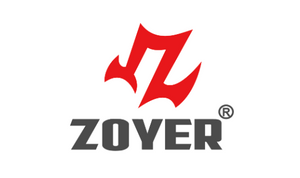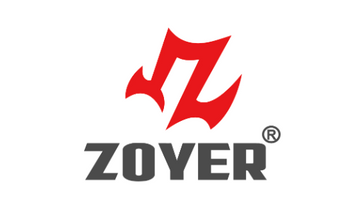Is a Lumbar Back Brace Right for You? Your Guide to Choosing and Using One Effectively
Back pain, it's practically a national ailment these days! Bending over, sitting for too long, or even just standing comfortably – does your lower back scream in protest? You're definitely not alone!
Today, we're going to dive deep into something simple yet incredibly effective: the lumbar back brace. We'll explore why you should consider it and how to pick the perfect one for your needs.
What Exactly Is a Lumbar Back Brace? And Why Is Everyone Talking About It?
You might've heard the term "back support," but did you know there's a more precise name for it – the lumbar back brace?
It's not just some random strap; it's a true "teammate" specifically designed for your lower back! Its core functions are clear: it stabilizes your spine, reduces strain on your muscles and ligaments, and subtly helps you maintain proper posture.
So, What Does This "Teammate" Look Like?
A lumbar back brace typically wraps around your waist and lower back area, much like a custom-fitted, invisible armor.
They're made from various materials, ranging from breathable neoprene to sturdy, rigid plastic. The goal is simple: to comfortably compress and support your back.
High-quality braces also feature adjustable straps and flexible supports, allowing you to customize the fit to your body and ensure effective, all-day relief!
| Back Brace Material | Characteristics | Ideal For |
|---|---|---|
| Breathable Neoprene | Lightweight, breathable, gentle compression | Daily wear, light activity, sports |
| Elastic Fabric | Soft, comfortable, moderate support | Sedentary individuals, preventative use |
| Rigid Plastic | Strong fixation, restricts movement | Post-surgery, severe injuries, high stability needs |
Did You Know Back Braces Come in Different Types?
Don't assume all back braces are the same! Depending on your needs, they have different "personalities":
- Soft Braces: Offer gentle support, perfect for everyday wear. They're like a soft hug for your waist, reminding you to maintain good posture.
- Semi-Rigid Braces: Provide stronger stability, falling between soft and rigid options. They're effective for relieving moderate pain.
- Rigid Braces: Often recommended after injuries or surgery, offering powerful fixation and restriction to help stabilize your spine during recovery.
Understanding these differences is key to choosing the "just right" brace that truly addresses your specific concerns!
| Back Brace Type | Support Level | Applicable Scenarios | Recommendation |
|---|---|---|---|
| Soft | Light | Daily life, light activities | Posture reminder, preventative |
| Semi-Rigid | Moderate | Moderate pain, physical labor, sports | Strain reduction, stability |
| Rigid | Strong | Post-surgery, severe injuries | High fixation, accelerated healing |
How Does a Lumbar Back Brace Work Its "Magic"? Unraveling the Secret to Pain Relief!
You might be curious how a simple device like this can really alleviate back pain.
Well, its "magic" primarily comes from two key factors:
Compression Is Key: A Gentle Hug for Your Lower Back!
The primary way lumbar braces relieve pain is through gentle compression around your abdominal and lower back regions.
Don't underestimate this action! It effectively supports your core muscles and spinal structure, creating a strong defense for your lower back.
This significantly reduces strain on your vertebrae and discs, providing immediate and noticeable relief – sometimes even making the pain disappear!
Improved Posture and Stability: Say Goodbye to Slouching, Hello to Confident Standing!
Have you noticed that many people's back pain stems from poor posture? A lumbar brace acts like your "posture coach," reminding you to stop slouching! It helps you maintain correct spinal alignment, offering not only instant relief but also fostering long-term posture correction, which can fundamentally reduce future back pain episodes.
| Back Brace Function | How It Works | Why It's Effective |
|---|---|---|
| Compression | Increases intra-abdominal pressure, supports spine | Reduces disc pressure, alleviates muscle tension |
| Support | Stabilizes spine, limits improper movements | Prevents injury, provides stability, speeds recovery |
| Posture Correction | Reminds and guides body to proper alignment | Reduces spinal burden, improves chronic pain issues |
When's the Best Time for Your Back Brace to "Make an Appearance"? Don't Misuse It!
Now that you know how powerful back braces are, don't just use them haphazardly!
Wearing it at the right time will maximize its benefits and truly help you out.
At Work or During Heavy Lifting: Your "Mobile Safety Helmet"!
If your job involves prolonged standing, heavy lifting, or sitting at a desk all day, your lower back is under immense daily pressure! In these situations, a lumbar brace acts like your "mobile safety helmet," significantly reducing the burden on your back and minimizing the risk of injury.
It allows you to work more comfortably and safely!
During Physical Activity or Sports: Adding a "Protective Net" for Your Waist!
Love sports, fitness, gardening, or any activity that challenges your back? Then a lumbar brace is your waist's "protective net"!
It stabilizes your spine, preventing injuries from sudden movements or repetitive stress. You can enjoy your activities to the fullest without worrying about back strain.
Post-Injury or Surgery: Your "Invisible Assistant" for Faster Recovery!
If you've experienced a back injury or recently had surgery, a lumbar brace becomes your indispensable "invisible assistant"! It provides extra support for your spine, prevents harmful movements, and helps stabilize your spine during recovery, accelerating the healing process.
What Are the "Bonus" Benefits of Using a Lumbar Back Brace?
A lumbar brace offers more than just immediate pain relief; it brings a wealth of long-term "perks" too!
Say Goodbye to Pain, "Unlock" Your Daily Life Instantly!
The most immediate feeling is: pain OUT! Lumbar braces quickly stabilize and support your stressed back muscles and ligaments, allowing you to perform daily tasks more comfortably. Want to bend down to pick something up? Want to sit down with ease? With a back brace, these challenges become a breeze!
Regain Your Upright Posture, Boost Your Confidence Instantly!
Consistent use of a back brace acts like your "posture coach," slowly correcting long-standing bad posture habits. When your posture improves, you not only reduce the likelihood of chronic back pain but also stand taller and more confidently!
This isn't just about what a back brace can give you; it's the beginning of improved quality of life!
Injury Prevention, Faster Recovery: "Double Protection" for Your Back!
A back brace not only prevents future injuries – for example, if you accidentally bend to lift something heavy, it can limit excessive movement in your lower back, reducing injury risk. Additionally, if you're already injured, it provides the necessary spinal stability, minimizing further strain and accelerating your recovery process. It's like having "double insurance" for your back!
Choosing Your "Destiny Brace"! How to Pick a Brand?
There are hundreds of back braces on the market, so which one is right for you? Don't worry, choosing a back brace is actually simple; the key is understanding your own needs! When selecting, you can consider the following aspects:
- Based on Pain Level and Needs: For mild pain or daily prevention, a soft brace might suffice; for moderate pain or physical activities, a semi-rigid one could be better; and for severe pain or post-surgical recovery, a rigid brace might be necessary.
- Material and Breathability: Comfort for long-term wear is crucial, so choose breathable, skin-friendly materials.
- Adjustability and Fit: A good back brace should be adjustable to your body shape, ensuring stable and comfortable support.
- Brand Reputation and Reviews: Opt for brands with a good reputation and medical compliance to ensure product quality and safety. Many well-known brands such as Zoyer, Bauerfeind, and Sparthos have their unique features and advantages; it's a good idea to compare them.
| Back Brace Type | Support Level | Key Considerations | Example Scenarios |
|---|---|---|---|
| Everyday Use | Light/Moderate | Comfortable, breathable, doesn't impede daily activity | Long hours at desk, light chores, preventative care |
| Sports Use | Moderate/High | Good stability, durable, moisture-wicking | Gym, running, basketball, weightlifting |
| Medical/Rehab | High | Strong fixation, restricts movement, doctor recommended | Post-spinal surgery, severe disc herniation, chronic back pain patients |
How to Maximize Your Back Brace's "Power"? These Tips Are a Must-Know!
Just wearing a back brace isn't enough! To get the most out of it, you need to learn these little tips:
Combine with Core Exercises: Your Brace's "Best Partner"!
While a back brace provides support, relying solely on it for too long can weaken your core muscles.
So, combining it with gentle core-strengthening exercises is your brace's "best partner"! Be sure to consult a professional physical therapist or doctor to get a customized exercise plan that's right for you.
Measure Accurately, Pick Your "Exclusive Size"!
The size of your back brace is incredibly important! Too loose, and it won't be effective; too tight, and it'll be uncomfortable. How do you measure?
It's simple! Grab a soft measuring tape and accurately measure your waist at the belly button. Make sure the measurement is snug but comfortable.
Then, be sure to match your measurements with the size chart provided by your chosen brand to find your "exclusive size," ensuring both comfort and effectiveness!
Don't Forget Maintenance, Help Your Back Brace "Live Longer"!
Just like your clothes, your back brace needs proper cleaning and maintenance to extend its lifespan and ensure hygiene.
Always follow the cleaning recommendations on the product instructions, which usually suggest hand washing and air drying, avoiding machine washing or high-heat drying to prevent material damage.
Quick Reminders:
- Can I wear a lumbar brace all day? Intermittent usage, guided by medical advice, is recommended. Prolonged wear can lead to muscle dependency.
- Will a brace permanently cure back pain? Braces significantly relieve pain, but optimal results often require complementary therapies like exercises and posture improvements.
- Is it covered by insurance? Many braces are eligible; verify details with your insurance provider.
Conclusion: Ready to Say Goodbye to Back Pain and "Stand Tall" in Your Life?
Don't let back pain limit your life any longer! A lumbar back brace isn't just a supportive tool; it's the start of you regaining comfort and enjoying life pain-free. Take action today and choose the most caring protection for your lower back! Your back deserves better!

